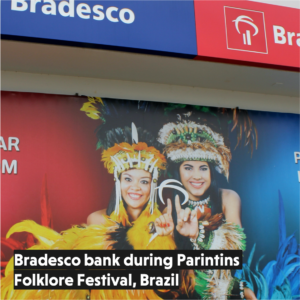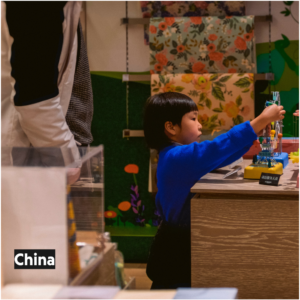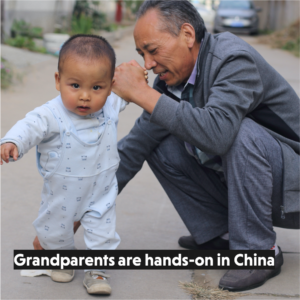Are we heading into a post-globalised world? And what does this even mean? These are questions I’ve seen both peers and journalists raising lately, and it’s easy to understand why.
Covid-19 triggered the ‘largest and fastest decline in international flows – including trade, foreign direct investment, and international travel – in modern history.’ (Will Covid-19 Have a Lasting Impact on Globalization, Harvard Business Review). Around the world, the pandemic fanned the fear of ‘foreign-ness’ among many, accelerating an existing trend of favouring the ‘local’ over the ‘global’. But even up-close – at a regional level – the pandemic provoked societal fragmentation. Around the world, lockdowns confined the mobility of individuals to within their very immediate communities, cementing new attitudes, motivations and habits.
So what might a post-globalised world mean for multinational brands and businesses who need to maintain local relevance while working towards a broader global strategy? Or for smaller companies who still wish to grow via expansion into new markets? Having survived such a long period of uncertainty, many companies now lack confidence in their long-term ambitions. It is true that almost every business is having to reconsider plans made before 2020. But there is also plenty of reassurance to be found. For a start, even the most pessimistic forecasts do not suggest that we’ll retreat to a world of disconnected national markets. Furthermore, we are already watching many audiences and markets recover from the impact of the past year, albeit with understandable set-backs and at different speeds. Smart businesses are informing themselves with market insight and adapting their global strategies, rather than abandoning them. At intO, we’ve already delivered more LOCALISE projects in 2021 than we have in any previous year.
intO’s LOCALISE research delivers actionable insights that ensure relevance with new audiences and/or markets, supporting the development of an ownable and contextualised positioning that is also future-proof. Learn more HERE.
Globalisation isn’t reversing, it’s evolving.
Contrary to reports about the “death of globalisation”, I believe that we’re witnessing its renaissance. The pandemic has accelerated trends we could already see. Business was already global; the internet and technology have long enabled consumers around the world to access the same ideas, meanings and values – but the pandemic increased the usage and importance of digital technology across every layer of our lives. We are more connected than ever.
As a result of this unique level of connectivity, there has never been such a period in history where people all over the world have been able to fully experience a common event together. This presents businesses with enormous opportunities for global growth if they can spot the lucrative parallels in needs and habits that are arising across new audience groups and markets. The first step is to explore these unfamiliar contexts and better understand the significant cultural nuances, as well as similarities with other regions.
It’s impossible to adapt to cultural nuances if you don’t first understand them
Reaching local consumers in the most relevant way possible is key when brands have plateaued in an existing market and want to sell more, or when they want to have the best chances of success in a new market.
For big and small brands alike, it’s crucial to first understand the cultural nuances. Only then can decisions be made about how far to go in adapting the original idea/product in order to appeal to a wider or new customer base.
The Parintins Folklore festival is one of Brazil’s largest annual festivals. It sees two local teams, ‘blue’ and ‘red’, compete by re-telling folk stories accompanied by vibrant carnival-style dancing, singing and parade floats. The festival is so popular, and competition so fierce, that the main sponsor, Coca-Cola, produces both red and blue coloured cans for the event to broaden their appeal and ensure that the supporters of both teams buy their products.

Like Coca-Cola, Bradesco bank, in Parintins city, also adapts its brand colours to Caprichoso (blue) & Garantido (red) for the festival.
The opportunities for business growth lay at the place where ‘global’ and ‘local’ insights meet
No pattern of behaviour is isolated. Broader, worldwide triggers will always influence individuals, behaviours and attitudes on a ‘micro’, local level. At the same time, local insights may also impact the wider, social ‘macro’ level. The most exciting and valuable insights often come from spotting opportunities at the points where these shifts meet (you can hear me speak about this in more detail at this talk, Cultural Friction & Global Momentum, I gave for TEDX).
Our work with Uber, in Cairo, Egypt, set out to understand why new driver sign-ups via the global app (that facilitated independent onboarding) were in decline in this region. The goal was to understand the context of this local trend in order to make UX adaptations that would reverse it, while still aligning with the broader global product and strategy. Our client had mapped other regions that were likely to have similar cultural barriers, so a better understanding of the market in Egypt would inform a solution that would work across these markets, too. Our work also identified a previously unknown consumer shift in the form of a business-related driver audience and increased Uber’s potential scope in the region. As Uber is such a widely-used service around the world, catering to this local shift may influence the creation of similar audiences in other international markets.
Learn more about our work with Uber in Egypt
Understanding the interplay between ‘global’ and ‘local’ will allow big brands to boost their local appeal while retaining global relevance. It will also allow smaller brands to scale up in new markets by targeting audiences and occasions which make the most strategic sense. Here are four principles that underpin how we help our clients to navigate LOCALISE projects:
1. Cultural insights do not travel in a straight line
Our superpower, at intO, is our team of Local Researchers who live in over 50 established and emerging markets around the world. But it’s important to remember that expansion isn’t solely about entering new regionally-defined markets.
A market is defined as the sum total of all the buyers and sellers in a specific area. The area may be the world, states, countries or cities. Effective localisation strategies often begin with the identification of potentially lucrative new audiences – regardless of geographical location. As digital services and products increasingly go beyond geographical boundaries, many localisation strategies are location-agnostic (at least to begin with), and acknowledge that target customers may be living anywhere on earth. In these instances, LOCALISE research can be used to prioritise communication and marketing strategies in those regions, and languages that represent the best commercial opportunities.
While we’re used to dividing up the world into geographic regional markets (like EMEA, APAC, LATAM etc), grouping markets like this can lead to missed opportunities. The impact of globalisation means that similarities can exist between completely unexpected countries. Often, countries that share a similar economic history have more in common than neighbouring countries.
This has been witnessed during our ongoing work with Dorel Juvenile. During one project, intO discovered striking attitudinal similarities between China and Brazil in relation to parenting and socialising as a parent. These shared attitudes influence how people choose which children’s products to buy (our research focused on car seats and pushchairs), and how they respond to this category’s marketing. Consumers of these products in both countries share many of the same motivations and purchase behaviours. Discovering synergies between unexpected markets can have a huge impact on the success of business growth. The trick is to understand the impact globalisation has had on consumer habits, explore this impact translation on a local level, then create a strategy that draws on both.


intO discovered striking attitudinal similarities between China and Brazil in relation to parenting and socialising as a parent.
Learn more about our work with Dorel Juvenile in China & Brazil
2. Real life (in detail) + market dynamics (in context)
All the research we do, but especially localisation research, has two vital perspectives to investigate and understand. The client’s focus might be limited to the market level (how does our offer translate and succeed here?) but market activity at the macro level is best understood by looking at patterns of human behaviour and the systems working around them.
For this reason, we blend experimental and traditional qualitative research methods to firstly explore and map a market’s dynamics. This exploration typically examines:
- Logistics and regulations (in relation to the client’s category or industry)
- Specific signifiers of slow-moving global macro trends
- The more granular codes of cultural semiotics
- And, the building blocks of national identity
This kind of research usually combines desk research in conjunction with our local researchers with expert interviews (the latter when a layer of special knowledge or a unique vantage point is required).
Then, once market dynamics are understood and mapped, we go deeper to the level we call ‘life layers’, and we take a look at the habits, rituals, needs and expectations that are being influenced by market dynamics. For our purposes there are six layers: Identity, Family, Home, Community, Work and Society. Each layer is a potential orientation point for our client’s brand or offer, so we use mobile ethnographies, journals and diaries in conjunction with in-depth interviews, to understand the physical context and emotional commentary for the layers of most relevance.
3. Insider access is best combined with an outsider’s perspective
In South Korea, new mothers and babies stay at home for 100 days after the birth. In China, it is normal for grandparents to move in with new parents for at least the first three years after having children. In Norway, it’s common practice for parents to take young children outside to nap in the fresh air, even when the temperature is below freezing. In India, Hong Kong and Taiwan, children tend to go to bed much later (around 10pm) than those in the West (around 7.30pm). In Liechtenstein, children don’t start school until aged seven. Our ideas about how it’s best to raise children stem from the culture we’ve been brought up in.
These kinds of cultural norms can make or break the launches of new products and services. But they are so ingrained within the culture that natives wouldn’t even think to tell you about them. It’s not enough to tap insider knowledge alone. You have to view insights as an outsider, too, otherwise they may simply remain unseen.
The team at intO has an insider/outsider framework. The central, strategic team has a global overview and understanding of macro patterns and trends. On the other hand, our network of Local Researchers – although all extremely well-travelled – as our ‘insiders’ when conducting research in their markets. This enables us to blend regional expertise and native knowledge with the central team’s worldwide perspective.

In China, it is normal for grandparents to move in with new parents for at least the first three years after having children. Chinese grandparents often play a very key role in the upbringing of children.
4. Market resonance is more valuable than market share
King, the Swedish games company, launched Candy Crush in 2012, paving the way for a new generation of mobile games, and becoming one of the first freemium apps to generate over $1 billion in revenue. When King launched its next game, Pet Rescue Saga, it was a huge follow-up success in Europe, but flopped in South Korea, which was one of the biggest markets for digital gaming at the time. This stark discrepancy was because of the subtle cultural differences to do with keeping pets. The game featured less traditional pets, like pigs, which seemed to have far less of a sentimental attachment for Korean customers compared to their European counterparts.
When it comes to prioritising target markets, size is less important than the relevance of your offer. Instead of focusing on the biggest market, King should have focused on those markets where the very essence of the game had most local resonance.
During a LOCALISE project that intO deployed for Skyscanner, we looked into ten of the key target growth markets that had been identified by the business. The Skyscanner brand had established the business as a global search engine for flights. However, there was an ambition to evolve this positioning and become known as an inspiring, trusted travel partner. We set out to understand how people across these ten markets perceived the brand and used the service. Amongst other insights, our research discovered that certain markets were already primed for rapid growth, while others – despite their size – weren’t digitally or culturally ready to adopt the brand or its services. Local relevance must always be explored and assessed as part of any market growth plan.
Learn more about our work with Skyscanner in Australia, Germany, India, the Netherlands, Russia, Spain, South Korea, Taiwan, the USA and the UK
Actionable insights ensure finely tuned resonance within the real lives of new audiences
When growth potential exists at a defined point, intO’s LOCALISE research respects the considerations that have been outlined in this article, to support contextualised, future-proof positionings that can be truly owned and to illuminate a clear path forward. Whether servicing business-wide strategies or focusing on communications, brand positioning or product/service innovation, LOCALISE research works with intO’s other research services fit alongside the creative development journey.
We work with creative decision-makers who need to discover how local people worldwide really think, plan, act, spend and live. If you’d like to talk about how intO’s LOCALISE research could support your brand, business or department, please get in touch with Joanna Brassett: [email protected]
 Joanna Brassett is the Founding Director of intO. She is an expert in combining design research with social science and strategic innovation and specialises in turning cultural insights into design opportunities and business strategies.
Joanna Brassett is the Founding Director of intO. She is an expert in combining design research with social science and strategic innovation and specialises in turning cultural insights into design opportunities and business strategies.
Strategy Innovation Social Change Research








